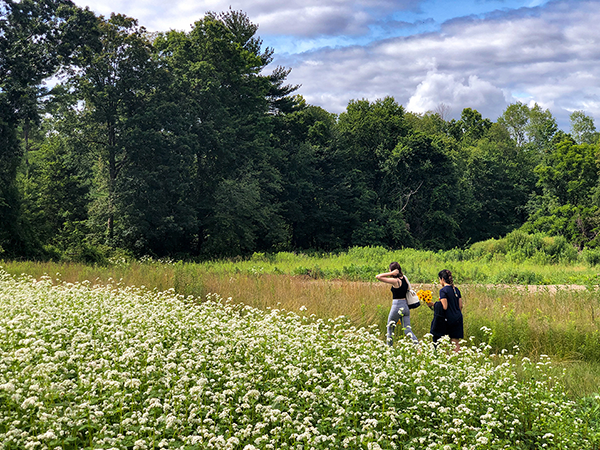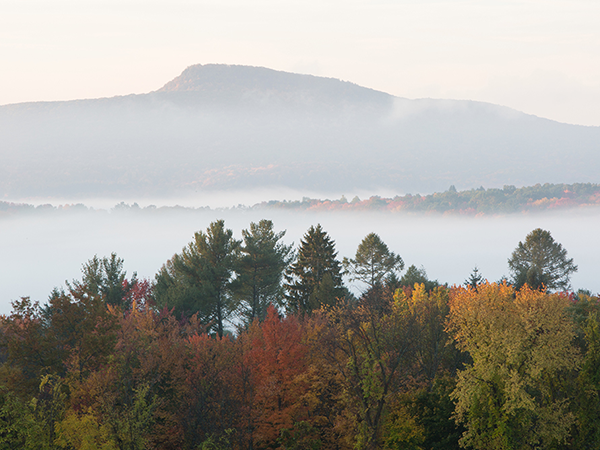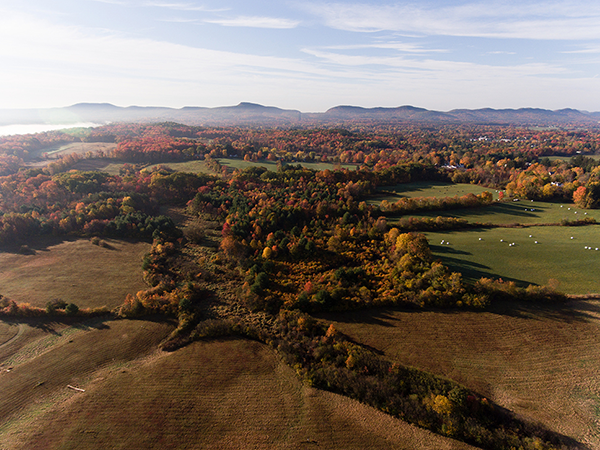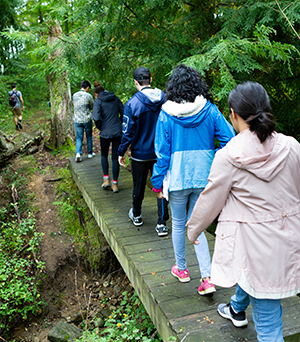The Amherst College Wildlife Sanctuary includes approximately 500 acres in a diverse collection of open fields (both actively maintained and unmanaged), wetlands, flood plain woods, river, upland woods, plantation pines, and ponds—and is an important place for both recreation and research.
Open Fields
The variety of open fields located south and southeast of the main campus are important and scenic parts of the landscape and of the ecological diversity of the Sanctuary. Some are used through rental agreements for hay production, others are mowed to keep open as wildlife habitat, and several are unmanaged.
Forested Areas
Forested areas within the Sanctuary include red pine plantations, white pine stands, areas of swamp hardwoods, flood plain hardwoods along the Fort River, and upland hardwoods.
Large specimen white oaks and white pines are present in the Eastern Wildlife Sanctuary south of College Street.
Ponds, Streams & Wetlands
Principal water resources in the Sanctuary include:
- Fort River and a major tributary system coming into the Fort River from the north
- Fearing Brook and its small tributaries
- Two ponds
- Sections of wet meadow in the main South Pleasant Street field and near South East Street
- Wet shrub-filled swales near Mill Lane and the main South Pleasant Street field
- Vernal pools in the area near the Physical Plant south of College Street and in the Wildlife Sanctuary area west of South East Street
- Swamp forest near South East Street
Research & Environmental Monitoring
The Amherst College Wildlife Sanctuary is the site of ongoing teaching and research by students and faculty. The land is also actively managed by our Facilities Department to support conservation of animals such as grassland birds and turtles.

Sanctuary Trails Interactive Tours
In 2021, the sanctuary trails were revitalized as part of the College's Bicentennial. The campus map includes tours of each of the Sanctuary trails that you can follow along as you walk. Access each tour below; there are also QR codes on trail signage that will link to each tour.

One can find many seasonal or vernal pools throughout the College Sanctuary south of College Street and west of South East Street.

Book & Plow Farm was established in 2013 through the efforts of a committee of students, professors, alums, and staff.

Mammoth Loop goes through the heart of the Sanctuary, connecting with the Book & Plow trail at several points.

Download a printable map of the Sanctuary that includes additional points of interest for each of the Sanctuary trails.





















